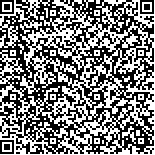下载中心
优秀审稿专家
优秀论文
相关链接
摘要

珊瑚礁是生物多样性和初级生产力最高的海洋生态系统之一,对人类社会与海洋生态环境的健康和可持续发展有重要作用,而珊瑚礁又是中国南海主要的国土类型,国家因此越来越重视对南海珊瑚礁的规划、管理、建设与保护。珊瑚礁的调查与探测则是进行珊瑚礁活动的基础与依据,而遥感则在珊瑚礁的大范围探测方面具有很大的潜力,所以国内外已经存在很多利用遥感对珊瑚礁进行调查与探测的研究与应用。本文将按照被动遥感和主动遥感的顺序,客观地阐述国内外珊瑚礁遥感研究与应用的进展,探讨珊瑚礁遥感研究与应用的发展趋势,并尝试总结中国珊瑚礁遥感的机遇和挑战。其中被动遥感包括珊瑚礁地形与水深的遥感、珊瑚礁底质与地貌的遥感、珊瑚礁岸线变化与稳定性的遥感以及珊瑚礁环境的遥感等,而主动遥感则包括珊瑚礁水深的机载激光雷达遥感、珊瑚礁地貌的船载声学遥感和珊瑚礁地形的星载微波遥感等。结果发现,国内珊瑚礁遥感研究与应用的整体水平落后于国外:虽然在部分数据处理方面具有比国外更先进的技术,但相应的应用基础研究仍然达不到国外的广度与深度。因此,国内的珊瑚礁遥感研究仍需要鼓励珊瑚礁学者更多的参与与合作,以便在硬件设备和数据处理等方面加强针对珊瑚礁遥感的研究,进而融合多种手段而实现珊瑚礁遥感的工程化应用。
Coral reefs are considered a marine ecosystem containing the highest level of biodiversity and primary productivity and are important to the healthy and sustainable development of future human society and marine ecological environment. Coral reefs are the main national land types in the South China Sea, and the state has paid increasing attention to planning, managing, constructing, and protecting coral reefs. All these activities are based on the investigation and measurement of coral reefs. Considering that remote sensing is an effective technique, which has potentials for monitoring the coral reefs in a large scale, remote sensing for the investigation and detection of coral reefs has been conducted by many authors in the past. On this basis, we review the progress of the study on and application of coral reef remote sensing at home and abroad for passive and active remote sensing. Passive remote sensing of coral reefs involves the remote sensing of bottom topography and water depth, substrate classifications and geomorphic units, change detection and stability assessment, and environmental factors. Active remote sensing involves airborne laser bathymetry, shipborne acoustics detection, and microwave remote sensing. The development trends of coral reef landform remote sensing are discussed, and the opportunities and challenges for the remote sensing of national coral reefs are presented. The overall level of our coral reef remote sensing is lagging behind other countries. Some coral reef remote sensing technologies are more advanced at home than abroad, but the depth and breadth of basic applications remain lagging behind those of overseas. Thus, to make coral reef remote sensing suitable in real engineering, our remote sensing experts have been suggested to collaborate with coral reef scholars to strengthen the specific studies on hardware devices, data processing technologies, and basic engineering applications.

